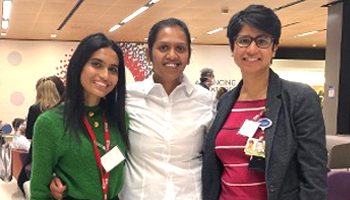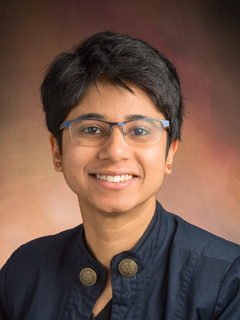HOW CAN WE HELP YOU? Call 1-800-TRY-CHOP
Sengupta Laboratory
We are hiring!
The Sengupta Lab is looking for postdoctoral candidates. Our research team is driven by a shared passion for the fascinating world of biological timing. We thrive on collaboration and foster a vibrant environment where work and enjoyment go hand in hand. If this sort of environment intrigues you, please email Shaon Senguptpa with your CV and a letter expressing interest.

Our mission is to develop a blueprint of the circadian regulatory networks that govern the resilience and recovery of lungs following injury. The circadian clock has evolved with life itself and equips organisms with the ability to anticipate environmental changes and threats — while the brain houses the master circadian pacemaker (i.e., a central clock), all cells of our body have their own clocks (i.e. peripheral clocks), including the lungs.
Lungs are vital to our physiology as the site of gas exchange — as such, their vulnerability to infections poses a grave threat to overall well-being. Remarkably, lung function exhibits significant variations throughout the day, affecting gas exchange, immune surveillance, mucus clearance, and repair processes. Despite the clear circadian pattern noticed in many pulmonary diseases, the circadian dimension remains largely unexplored in pulmonary research and clinical care. Our research aims to revolutionize lung health by harnessing the power of circadian rhythms.
Project Highlights
The lab's published data demonstrates that clock control of lung injury is mediated by limiting pathology (less inflammation and better repair on histology) and not by reducing viral burden. Their preliminary data reveals that Bmal1 deletion in lung epithelial sub-populations involved in repair (AT2 cell, Sox2+ basal cells and Scgb1a1club cells) all have reduced regenerative capacity in organoid assays.
The lab team also observed that the disruption of the clock specifically in (Scgb1a1+) club cells or depletion of NK cells abolishes the diurnal variability in response to IAV and results in higher mortality. Work in the Sengupta lab focuses on the mechanistic basis of these observations.

Shaon Sengupta, MBBS, MPH
Attending Neonatologist
Dr. Sengupta is a neonatologist and physician scientist with a long-standing interest in lung health. She studies the mechanisms of circadian regulation of lung inflammation, injury, and repair; and the effect of early life exposures on development and function of pulmonary circadian networks in adulthood.